Something went wrong!
Hang in there while we get back on track
Best attractions in Como

The majestic Duomo di Como has shaped the cityscape of Como since the late 14th century and is one of the most significant religious buildings in Northern Italy. The cathedral combines late Gothic, Renaissance, and Rococo elements and impresses with its magnificent marble facade, which was built between 1457 and 1486.
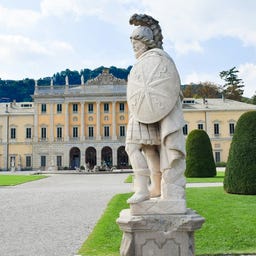
The majestic Villa Olmo has been perched on the western shore of Lake Como since the late 18th century and is considered one of the most significant examples of Italian Neoclassicism. In its opulent rooms, adorned with frescoes by Andrea Appiani, the villa welcomed illustrious guests like Napoleon Bonaparte and Giuseppe Garibaldi.

On the shores of Lake Como stands the Tempio Voltiano, an impressive museum building in the neoclassical-Lombard style, built in 1928 in honor of the famous physicist Alessandro Volta.
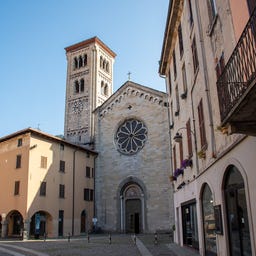
In the historic center of Como stands the Basilica di San Fedele, a fascinating example of Romanesque architecture with Baroque elements from the 11th century. A early Christian church was already located here in the 7th century, until the current building was constructed after the discovery of the presumed tomb of Saint Fedele in 965.
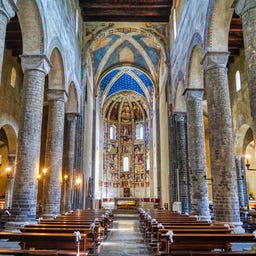
The Basilica di Sant'Abbondio is one of the most significant Romanesque church buildings in Como, built between 1050 and 1095 on the foundations of an early Christian basilica from the 5th century. With its characteristic twin towers and five-nave layout, it combines architectural influences from both sides of the Alps.
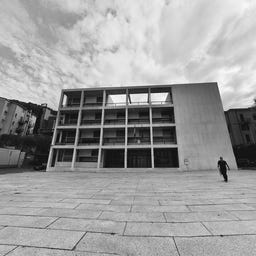
The Palazzo Terragni in Como is one of the most important examples of 20th-century Italian rationalist architecture, built between 1933 and 1936 by Giuseppe Terragni as a party headquarters. The striking building impresses with its clear square shape, four stories, and a thoughtful facade design based on the Golden Ratio.
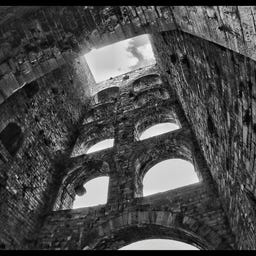
The impressive Porta Torre rises 34 meters into the sky of Como, serving as a powerful testament to Romanesque military architecture. This square fortress tower was built in 1192 to protect the city's main entrance after the city walls were rebuilt with the support of Emperor Frederick Barbarossa.
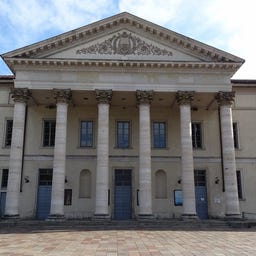
In the magnificent Teatro Sociale, which opened in 1813 with Adriano in Siria, you will find one of the most significant historical opera houses in Northern Italy. Designed in a neoclassical style by Giuseppe Cusi and Luigi Canonica, the theater features a horseshoe-shaped auditorium with three tiers of boxes and two galleries, topped by an impressive chandelier created by the artist Gaetano Spelluzzi.
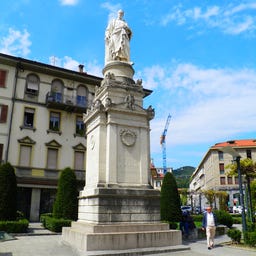

The elegant Villa Geno stands right on the shores of Lake Como and has a rich history that dates back to Roman times. Designed by architect Giacomo Tazzini in the late Neoclassical style, the building was extensively renovated in the mid-19th century and now houses a restaurant with a view of the lake.
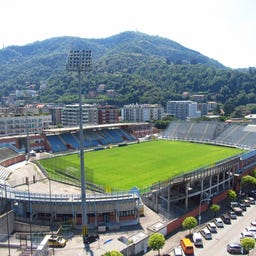
On the picturesque shores of Lake Como, the Stadio Giuseppe Sinigaglia stands as a fascinating example of early rationalist architecture in Italy, designed by Giovanni Greppi in 1927. With a capacity of 10,584 spectators and a covered main stand, it offers you not only exciting football matches of the local team Calcio Como but also breathtaking views of the lake.
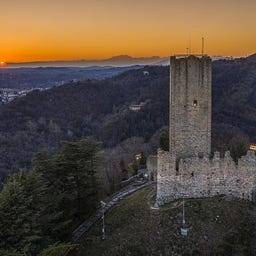
High above Lake Como, at an elevation of 430 meters, stands Castel Baradello with its distinctive 28-meter tall Romanesque tower. This strategically important fortress was expanded in the 12th century by Emperor Frederick Barbarossa and served for centuries as a military checkpoint, offering impressive panoramic views of the Alps all the way to the Po Valley.
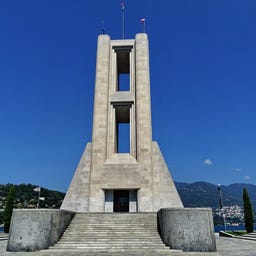
On the shores of Lake Como stands the 30-meter-high Monumento ai caduti, an impressive war memorial made of Aurisina and Reppen stone, dedicated to the 650 fallen soldiers of World War I. Inaugurated in 1933, the tower is based on a futuristic sketch by Antonio Sant'Elia and was brought to its final form by architect Giuseppe Terragni.
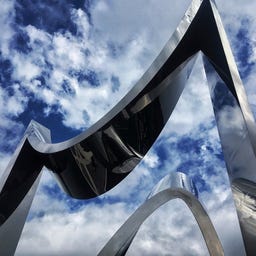
At the end of the breakwater in Como, the futuristic steel sculpture "The Life Electric" has been reaching 14 meters into the sky since 2015. Designed by the star architect Daniel Libeskind and donated to the city, this artwork consists of two opposing sine curves that represent the initials of the famous scientist Alessandro Volta. Weighing 29 tons, the stainless steel structure was funded by the association "Amici di Como" despite initial controversies and now stands as a striking landmark directly by Lake Como, opposite Piazza Cavour.
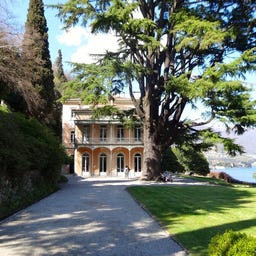
The majestic Villa del Grumello has been overlooking the shores of Lake Como since the 15th century, originally known as "Castellazzo." The banker Tommaso D'Adda transformed it at the end of the 16th century into one of the first summer residences by the lake, which later hosted famous guests like Alessandro Volta and Ugo Foscolo.

The Broletto di Como is the former medieval town hall of Como, built in 1215 by Podestà Bonardo da Codazzo. It originally served as a meeting place, courthouse, and trade center.
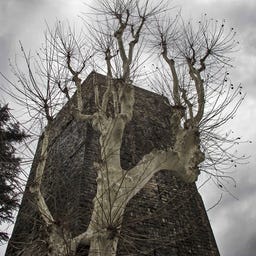
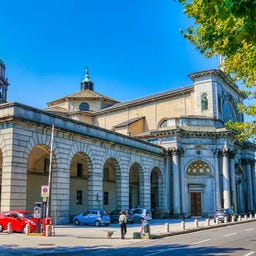
As the second largest church in Como after the Duomo, the Complesso del Santuario del Santissimo Crocifisso houses a wooden crucifix that has been attributed miraculous powers since 1529. Originally founded in 1236 by Canon Erasmo Campacci, the church was rebuilt in the 16th century and now features a late neoclassical façade adorned with bronze figures of saints. Inside the baroque-style church, you will find an impressive collection of over 400 votive offerings, as well as two historic wooden organs from the late 17th and early 19th centuries. Especially during Holy Week, when the revered crucifix is carried in a solemn procession through the streets of Como, the sanctuary becomes an important pilgrimage site.
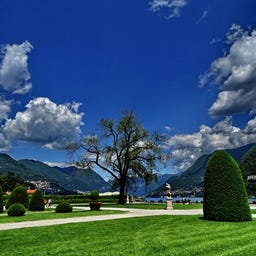

In the Silk Museum in Como, you will experience the fascinating history of the local silk industry, which made the region a significant textile center from the 19th to the early 20th century. The museum, opened in 1990, is housed in a modern building designed by Lorenzo Muzio and Franco Tartaglino, sharing the space with the renowned Paolo Carcano Silk Institute.
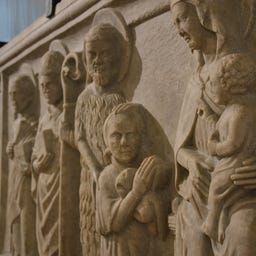
In the elegant Pinacoteca di Palazzo Volpi, the municipal art museum of Como, you can embark on an impressive journey through art history from the Middle Ages to the 20th century. The palace, commissioned by Archbishop Volpiano Volpi in the early 17th century, now houses four thematic sections featuring medieval sculptures, Renaissance portraits, historical altarpieces, and modern art.
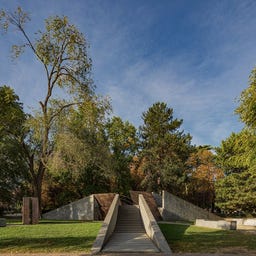
In the gardens by Lake Como, you will find the Monumento alla Resistenza europea, an impressive memorial against fascism. This commemorative site, inaugurated in 1983 by Sandro Pertini, was designed by the Milanese artist Gianni Colombo and features three staircases leading to large plaques bearing the names of the victims of World War II.
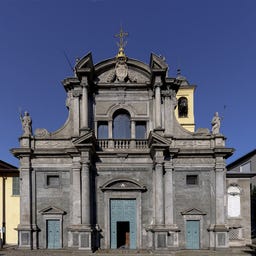
The Basilica di San Giorgio on the shores of Lake Como beautifully combines Romanesque and Baroque architecture. Originally built in the 11th century, this sacred building underwent extensive renovations due to flooding at the end of the 16th century, resulting in its current Baroque appearance with the impressive granite facade.
In the historic building of the former Ospedale Sant'Anna from the 15th century, you will find the renowned Giuseppe Verdi Conservatory today – one of the most important music schools in Italy. The impressive T-shaped structure, with its two small churches, served as a hospital until the early 20th century and was opened in 1982 as a branch of the Milan Conservatory after extensive restoration.
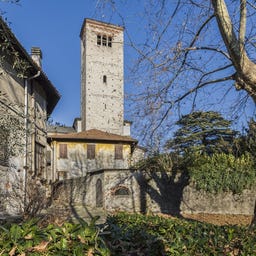
As the oldest basilica and likely the first cathedral of the Diocese of Como, the Basilica di San Carpoforo takes you back to the 4th century, when it was built by San Felice, the first bishop of Como, on the site of a martyr's memorial.
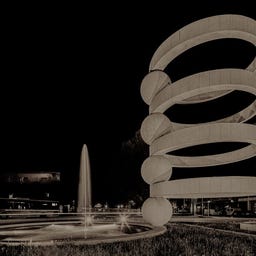
The monumental Fontana di Camerlata is an abstract artwork made of white concrete that you can find today at the entrance of Como. Created by Cesare Cattaneo and Mario Radice in the 1930s, the fountain was originally designed for the VI Triennale di Milano, where it received great acclaim.
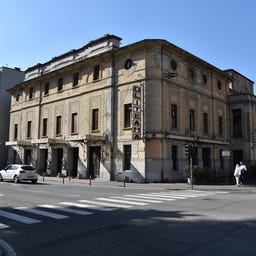
The Teatro Politeama, which opened in 1910, was designed as a modern people's theater that brought together opera, cinema, circus, and café concerts all under one roof. The building, created by Federico Frigerio, was ahead of its time and is considered the first structure in Como built with reinforced concrete. At its opening, Puccini's "La Bohème" was performed, but over the years, the theater was mainly used as a cinema. Despite renovations in the 1980s, this once versatile cultural venue has been empty since 2005, waiting for a new purpose.
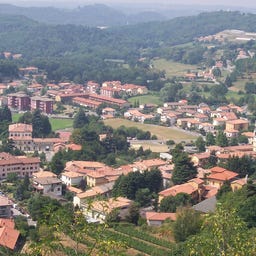
Monte Sasso, with its historic trenches from World War I and the picturesque Chiesetta dei Pittori from the 19th century, is the cultural and natural highlight of Parco della Spina Verde. From its two viewpoints, you can enjoy a breathtaking panoramic view of the region, and on clear days, you might even see the Apennines.
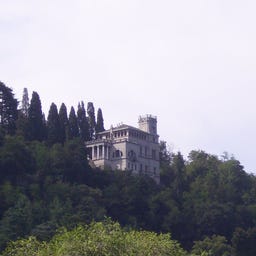
High above Lake Como, Villa Dosso Pisani sits on a natural rock outcrop - an architectural gem from the early 20th century, built by the writer and diplomat Carlo Alberto Pisani Dossi as his retirement home. Designed by architect Luigi Perrone di San Martino, the villa impresses with its open layout featuring multiple terraces and the stunning "Portico degli Amici," a colonnade inscribed with the names of Dossi's companions.
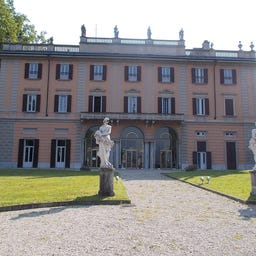
The majestic Villa Gallia on the shores of Lake Como combines the architectural splendor of the early 17th century with neoclassical elements from the late 18th century. Originally built in 1615 by Cardinal Marco Gallio, the villa took on its current neoclassical form through the architect Simone Cantoni, who redesigned it in 1815 for Carolina of Brunswick.

The Chiesa di San Donnino, accessible via a staircase in the historic center of Como, has a rich history that dates back to the 13th century. In its current form, the Catholic church features a neoclassical portico from 1813 and a striking bell tower from 1770, while the interior is adorned with baroque elements and frescoes from the 16th and 17th centuries.
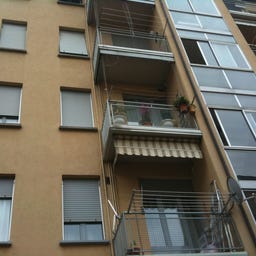
Near the Como Nord Borghi train station, you will discover the Casa Pedraglio, a modernist residential building from the 1930s. The renowned architect Giuseppe Terragni originally designed the building in 1934/35 as his personal retreat, and the striking balconies with their glass cement floors still catch the eye today.

In the ruins of the Roman Terme di Como, you explore the remains of one of the largest Roman bath complexes outside of Rome via elevated walkways. This bathing facility, established in the 1st century through a donation from Pliny the Younger, was in use until the end of the 3rd century and likely covered four times the area of the visible remains today.
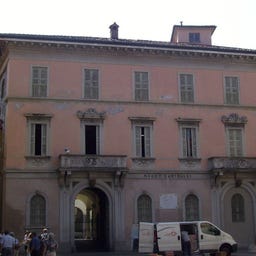
In the historic Palazzo Olginati from the 15th century, you can embark on a fascinating journey through the Italian Risorgimento. The museum, which opened in 1932, not only preserves the memory of Giuseppe Garibaldi's stay in Como in 1866 but also houses the original manuscript of Giacomo Leopardi's "Appressamento della morte" from 1816.
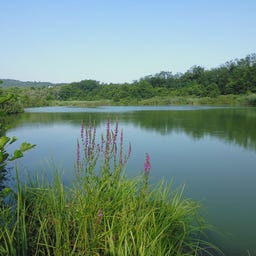
Just 6 kilometers from Como, you will find the Oasi del Bassone-Torbiera di Albate, a 90-hectare nature reserve managed by WWF. In this unique ecosystem, grasslands, forests, and wetlands alternate, which you can explore via a nature trail with observation huts.

High above Como, on a rocky outcrop at 453 meters, you discover the Eremo di San Donato - a former hermitage that originally was a natural cave used by hermits. In the 7th century, a fortified signal tower was built here, which later became the bell tower of the church and monastery.

The majestic Villa Saporiti stands in the Borgo Vico district of Como, overlooking the lake of the same name, and impresses with its elegant neoclassical architecture from the late 18th century. Designed by Leopoldo Pollack, the building, also known as La Rotonda, owes its nickname to the distinctive rotunda on the east side, adorned with Ionic columns and statues of Roman gods.
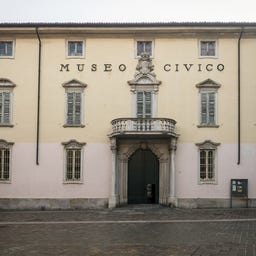
In the magnificent Palazzo Giovio, which has been the ancestral seat of the Counts Giovio since the early 13th century, you can discover the archaeological museum of Como today. The palace, designed in the Lombard Baroque style and opened as a museum in 1897, impresses with its elaborate 18th-century frescoes and houses significant collections on prehistory, early history, as well as Roman and medieval history of the region.
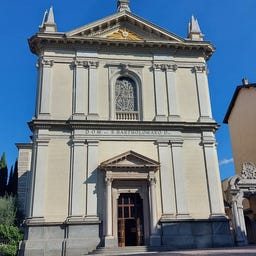
The Chiesa di San Bartolomeo in Como has a rich history that dates back to 1163, when it was founded along with a hospital by Giovanni Fica. In this simple church, you can find remarkable artworks, including an impressive "Christ Pantocrator" in the apse and paintings by Jacopo Palma the Younger and Giulio Cesare Procaccini.
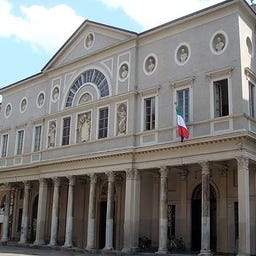
In this impressive school building from the 13th century, which originally served as an Augustinian monastery, history and education come together in a unique way. The neoclassical facade with its eight columns made of Cipollino marble now houses the Liceo Alessandro Volta, named after the famous physicist Alessandro Volta, who led the school from 1774 to 1778.

As the only Gothic church in Como, the Chiesa di Sant'Agostino impresses with its distinctive façade, crowned by three spires and adorned with a wooden rose window. Built in the 14th century by Augustinian monks, the church captivates with its three-nave interior featuring six side chapels designed in Renaissance and Baroque styles. Noteworthy are the late medieval frescoes from the 14th century in the flat apses, as well as the famous oil painting "Nascita di Maria" by Morazzone. After a comprehensive restoration in the 1960s, the church shines once again in its original Gothic splendor, free from the neoclassical alterations of the 18th century.
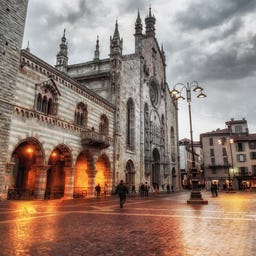
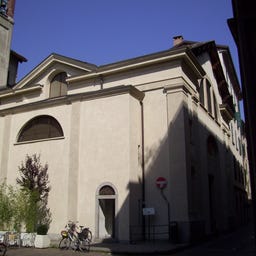
The "Church of Saints Felice and Amanzio," more commonly known as the "Church of Jesus," is a Catholic place of worship located in the historic center of Como. Dedicated to two of the early bishops of Como, the church owes its nickname to the fact that it was built by the Society of Jesus.
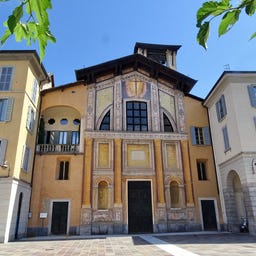
The Chiesa di San Giacomo is one of the oldest churches in Como and was first mentioned in documents in 1144. Throughout its tumultuous history, it has served not only as a place of worship but also as an important meeting point for the early commune of Como, before the Broletto di Como was built in front of the church in 1215.
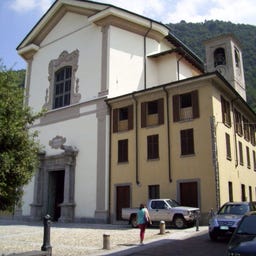
The "Church of Saints Julian and Ambrose," more commonly known as the "Church of San Giuliano," is a Catholic place of worship in the city of Como.
"Villa Dozzio" is a villa located in Tavernola, a small hamlet in the municipality of Como.
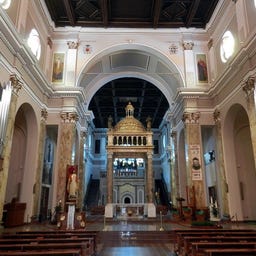
The "Sanctuary of the Sacred Heart," locally known as the "Church of Providence," is a Catholic place of worship in the city of Como. Built at the behest of Don Luigi Guanella and Andrea Carlo Ferrari, it is listed among the Sanctuaries and votive temples of the Diocese of Como.

At the corner of Via dei Mille and Via Andrea Alciato, you will discover the Asilo Sant'Elia, a single-story kindergarten in the rationalist style, designed by Giuseppe Terragni in 1936-37 for a new working-class neighborhood in Como. The generous window fronts of the building architecturally embody the then-innovative idea of a "open-air school," while the thoughtful interior design adheres to the functionalism of the 1930s down to the smallest detail. Unlike the neighboring Casa del Fascio, the building named after the architect Antonio Sant'Elia is intentionally low and horizontally oriented. Today, the temporarily closed building is owned by the city of Como.
The ancient "Castle of the Round Tower" stood in Como, on the site of the current Teatro Sociale.

The "Church of Quarcino," dedicated to Saints James and Philip, is a Catholic religious architecture in Como. Built in Romanesque style around the 10th century, the church is located within the homonymous village of Quarcino, which has been documented since 1259 as a vicinia and is now situated about 800 meters away from the Sagnino district.
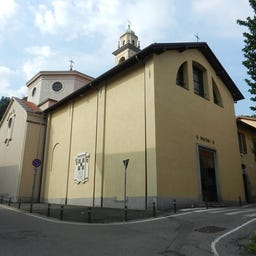
The "Church of San Rocco" is a Catholic place of worship located in the southern area of the Convalle di Como.
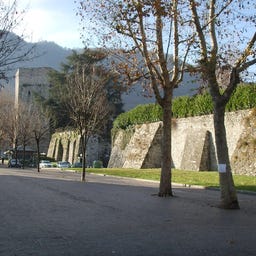
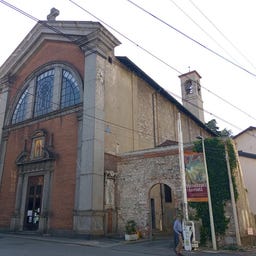
The "Church of Sant'Orsola" is a Catholic place of worship located just outside the city walls of Como.
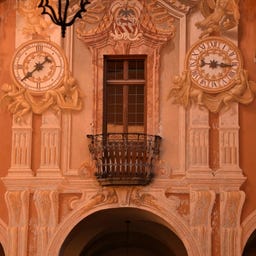
Founded in 1583 by Cardinal Tolomeo Gallio, the Pontificio Collegio Gallio is one of the most significant historical educational institutions in Como. In the grand rooms of the college, you will find impressive frescoes and stucco work from the 17th and 18th centuries, including masterpieces by the painter Carlo Carloni.
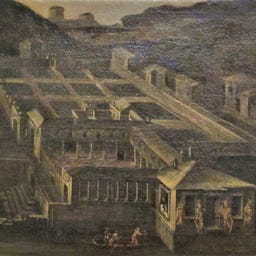
In the first half of the 16th century, the historian Paolo Giovio created his remarkable villa here, which is considered one of the first museums in history. The rectangular building with a lakeside terrace housed his famous portrait collection of over 400 historical figures—from Alexander the Great to the rulers of his time.
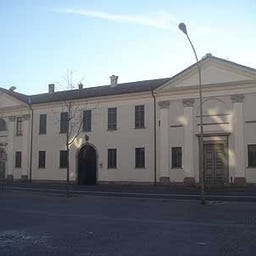
The former "Seminario maggiore di Como" is a neoclassical building designed in 1808 by Simone Cantoni, located in Como, opposite the section of city walls between the Torre di San Vitale and Porta Torre.
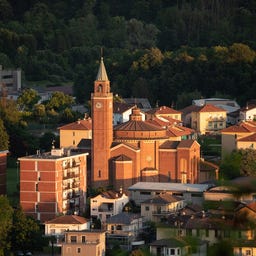
The "Church of Saints Simon, Jude, and Andrew," more commonly known as the "Parish Church of Saints Simon and Jude" or, less frequently, as the "Parish Church of the Sacred Heart," is a Catholic place of worship located in Lora, within the municipality of Como. The church serves as the seat of the local parish.
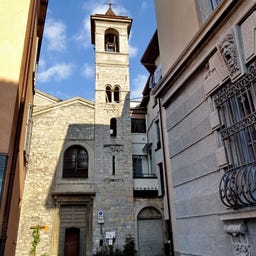
The "Church of San Provino" is a Catholic place of worship located in the historic center of Como. The church is dedicated to Probino of Como, the second bishop of the Como diocese.
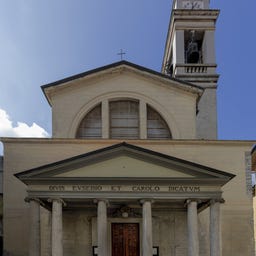
The "Church of Saints Eusebius and Charles," more commonly known as the "Church of Saint Eusebius,"

The "New Church of St. Joseph" is a Catholic place of worship located in the southern area of the Como valley. It was one of the first churches in the city to deviate from the architectural styles recommended by the Council of Trent.
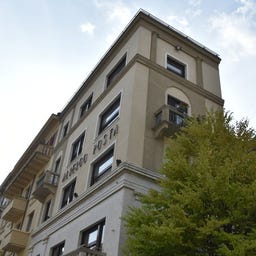
The "Palazzo Posta" is a historic building in the city of Como designed in 1930 by the rationalist architect Giuseppe Terragni.
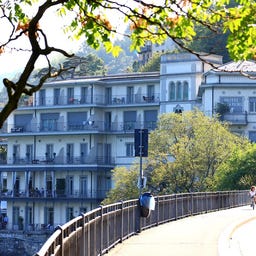
"Villa Flori" is a historic residence on Lake Como, located on the road that leads from Como to Cernobbio and directly overlooking the lake.
The "Sanctuary of Our Lady of the Miracle," also known as the "Shrine Temple of Water Sports," is a Catholic place of worship located in the Garzola district of the city of Como. The Sanctuary is listed among the sanctuaries and votive temples of the Diocese of Como.
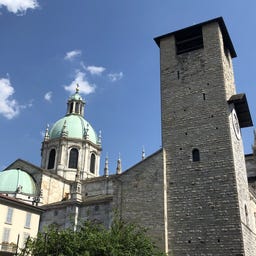
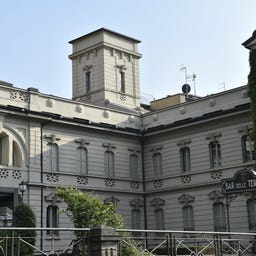
The "Palazzo Terminus" is a historic building in the city of Como, built in 1900 by the architect Italo Zanolini and associated with the Voltian celebrations dedicated to Alessandro Volta.
